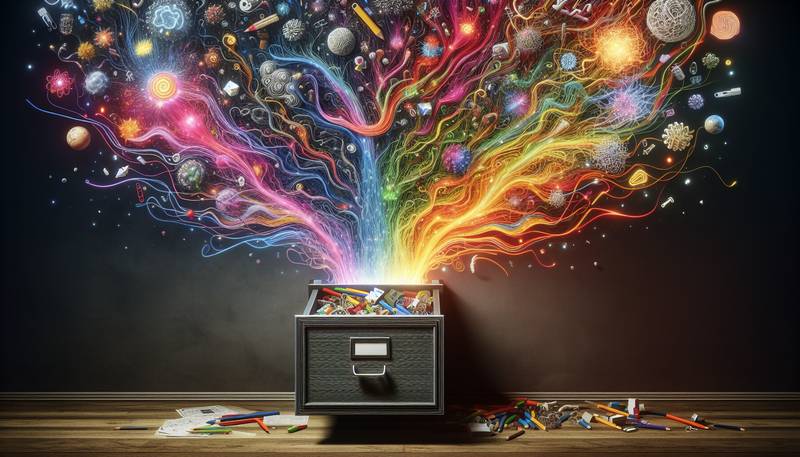Organizing Your Mind for Design: The Power of Mind Maps

Designing your mental junk drawerEver gazed into the abyss of your mental junk drawer and thought, "Man, I should really get this organized, but I just don't have the time or energy." Well, fear not, dear reader—I mean, fellow human being—for mind maps shall be your savior! Mind maps are fantastical, noodly, and oh-so-effective tools to help you organize your thoughts, especially when it comes to design. Settle in, and let's explore the magical world of mind maps, where chaos becomes order, and scribbles become masterpieces.What in the wild world of noodles is a mind map?A mind map is essentially a visual representation of related information, structured around a central idea. Picture a tree, with each branch representing various subcategories, and subsequent branches indicating further subdivisions. The end result is a sprawling diagram that is not only pleasing to the eye but also chock-full of organized thoughts and ideas. It's like a big, beautiful, and branching bowl of spaghetti—formed by the collective consciousness of the universe—or, you know, your brain.How to create your own mind-boggling mind mapAlright, it's time to roll up our sleeves and dive headfirst into the majestic world of mind mapping. Here's a step-by-step guide to help you create your own:- Step 1: Identify your central idea. This will be the beating heart of your mind map, the foundation upon which all thoughts shall be built. Consider this the trunk of your soon-to-be-thought-tree.
- Step 2: Add branches for your main categories. These could be themes, topics, or simply areas of focus. Don't be afraid to get creative with your branches; after all, the goal is to create a visually engaging map that will help you remember the information better.
- Step 3: Subdivide your branches with even more branches. This is where the magic happens, as you break down your main categories into smaller, more specific topics. You'll notice how this process not only makes your ideas more concrete and understandable but also highlights connections between them.
- Step 4: Keep on branching! Continue to add branches and sub-branches, refining your ideas and discovering new connections. The more detailed and comprehensive your mind map, the better you'll understand the subject.
- Step 5: Marvel at your creation. Take a moment to appreciate the noodly wonder that is your mind map. It's a thing of beauty, and you—yes, you—created it!
Why mind maps are like a mental sherpa for designNow that you've (hopefully) created your first mind map, let's discuss why they're so darn effective when it comes to design. In the wild and unpredictable world of design, it's essential to have a clear vision of your goals, priorities, and overall direction.Mind maps provide the ultimate mental sherpa, guiding you through the perilous terrain of ideas and ensuring you reach your final destination with your sanity (mostly) intact. Here are a few reasons why mind maps are the perfect companion for your design journey:- Clarity: Mind maps help you break down complex ideas into manageable chunks, ensuring your design approach is coherent and focused.
- Organization: With all your ideas neatly arranged in a visually appealing format, mind maps make it easy to identify bottlenecks and prioritize tasks.
- Creativity: The process of creating a mind map encourages you to explore new connections and think outside the box, ultimately leading to more innovative design solutions.
- Memory: The visual nature of mind maps makes it easier to recall information, ensuring your design ideas stay fresh in your memory.
- Collaboration: Mind maps can be easily shared with fellow designers or clients, facilitating communication and streamlining the design process.
The mind map: your personal mental sherpaSo there you have it, fellow adventurer—a comprehensive guide to the wondrous world of mind maps. With these tools at your disposal, your design process will be smoother, more efficient, and ultimately more successful.Don't be afraid to embrace the chaos of your mental junk drawer; after all, it's in the wild tangle of ideas that true creativity is born. Happy mind mapping!
|
|







